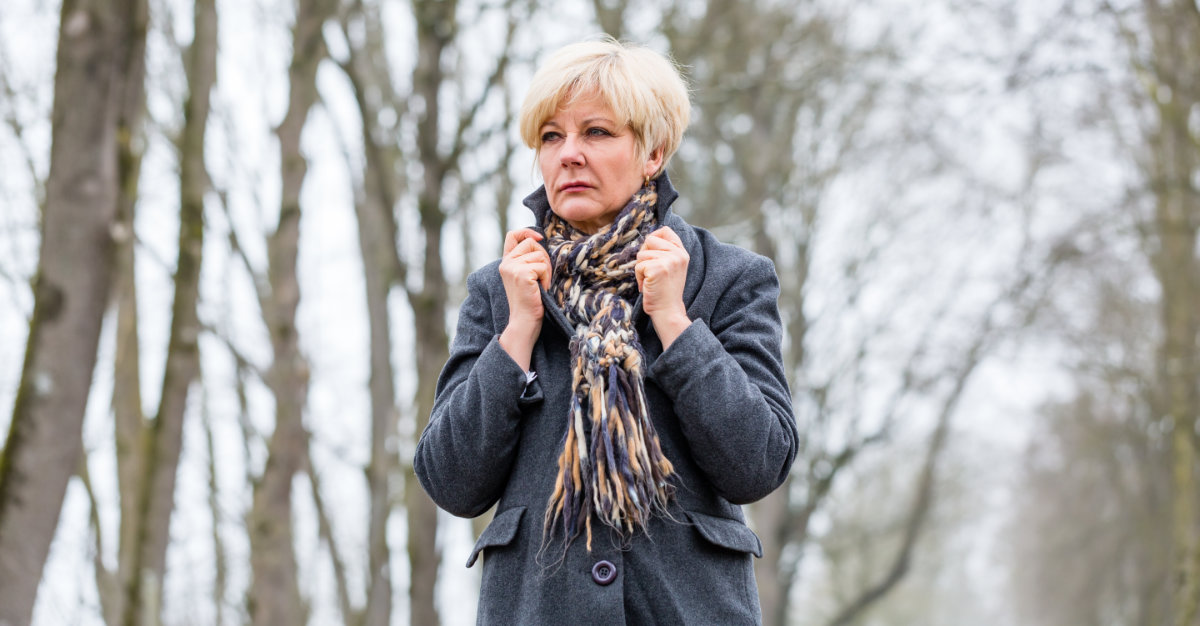Suffer with winter blues or SAD? These simple steps could make a real difference on how you cope with seasonal affective disorder, known as SAD. From treatment options to simple diet and lifestyle tweaks, Abi Jackson and Liz Connor talks to leading experts about managing seasonal affective disorder.
Does the onset of winter fill you with dread – because it’s not just the skies that’ll be turning dark and gloomy, but your mood too?
How common is seasonal affective disorder?
While a touch of winter blues is quite common, full-blown seasonal affective disorder (SAD – a recognised form of clinical depression that occurs as a response to less light exposure during wintertime) is relatively rare and can be majorly debilitating.
“We think about 3-8% of the UK population suffers with SAD,” says Dr Balu Pitchiah, SAD specialist and consultant psychiatrist at The London Psychiatry Centre. “But there is something called subthreshold SAD which affects about 20% of the population,” he adds, referring to people who may experience symptoms but to a more minor extent.
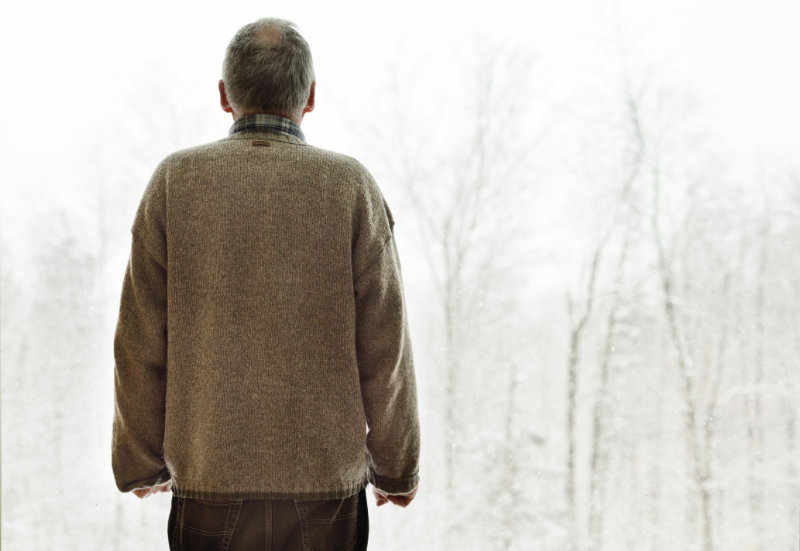
The key factor in SAD is the clear seasonal pattern. “We usually find people get symptoms of depression throughout the winter months, but mostly from September to March or April,” says Pitchiah. Generally, this means thing like consistent low mood and sense of hopelessness, loss of interest and motivation – but often with the addition of sleeping much more than usual and increased appetite, particularly cravings for “sugary, fatty, carbohydrate-rich foods”. Stuart Haydock, a clinical psychologist at Bupa, says people might also “have trouble staying connected to family and friends”.
Far from being just a touch of ‘winter blues’, seasonal affective disorder – otherwise known as SAD – is a form of clinical depression that has a clear pattern, occurring at the same time each year during winter.
How SAD affects mood during winter
“People with SAD regularly feel low in mood during the winter season, but recover during the summer,” says LloydsPharmacy pharmacist Anshu Kaura.
“You might notice a loss of pleasure or interest in normal activities, feeling irritable, worthless, guilty or in despair, a lack of energy or lethargy during the day, and struggling to get up in the mornings.”
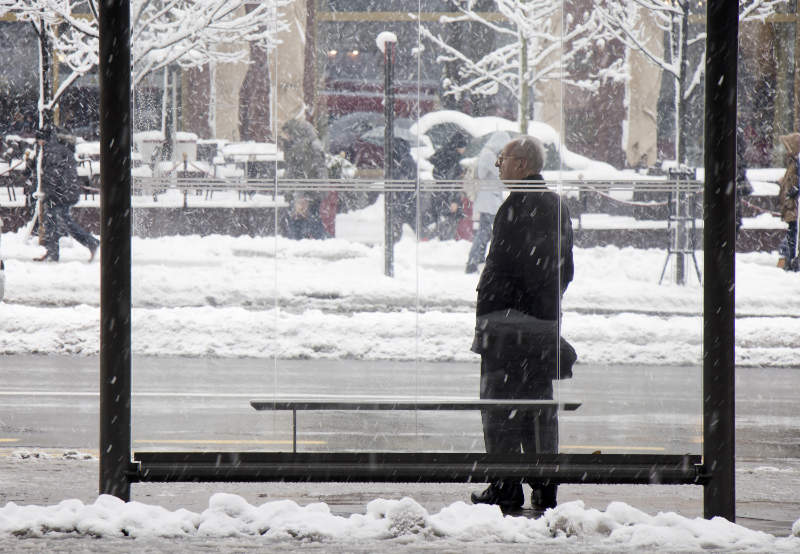
While only a small percentage of the population suffer with chronic and very debilitating SAD, experts believe many more of us may suffer mild effects of the disorder during the winter months.
“The NHS estimates that around one in 15 people in the UK are affected by SAD between September and April, and symptoms can increase during December, January and February,” says Kaura, who adds that “women are four times more likely to be affected than men, and are more at risk if they are between the ages of 18 and 30″. A family history of depression, bipolar disorder or SAD may also increase your risk.
What the the symptoms of seasonal affective disorder?
The symptoms of SAD fall into two broad groups – depression and non-depressive symptoms. Depression signs include:
- Feeling despair, feeling worthless or excess feelings of guilt
- Feeling ‘low’ or having a ‘low mood’
- You may find yourself crying or being more tearful
- Feelings of irritability
- Withdrawal from people and generally feeling less sociable
- Getting less pleasure from day-to-day activities, or losing interest in everyday life
- A lowered sex drive and less interest in sex
- Feelings of anxiousness or feeling stressed
- Having low self-esteem
These feelings can be persistent, or you may have periods where these feelings are more intense, followed by intense periods of happiness, energy and wanting to socialise with people – known as ‘manic depressive’ cycles.
In addition to the above, if you are affected by SAD, you may also feel:
- less able to concentrate on tasks or activities
- more hungry and eat more food than usual, possibly gaining weight
- more tired and lethargic, sleeping longer than usual and struggling to get up in the morning
- less willing to be active
How to cope with seasonal affective disorder
Pitchiah adds that “research shows people with SAD have a slightly different sensitivity to light, [so] they’re predisposed to developing it”. That said, whether you have full-blown SAD or merely a touch of winter blues, there are lots of things that can help – and there is no need to battle on alone.
Don’t suffer from SAD in silence
Struggling with any symptoms of depression, but not sure whether it’s full SAD? Pitchiah says: “It’s always useful to have a conversation with your doctor.”
Getting help earlier can prevent SAD getting worse, and if you don’t have SAD, there might be something else going on that needs to be looked at. “There are many interventions that can help, so why wait until things get worse? There’s no harm in having that conversation – and your doctor might say, ‘Just take a few precautions, make some modifications and let’s see how things go’. Not everyone will need antidepressants,” Pitchiah adds.

“Getting professional help when you need it is really important,” echoes Haydock. “A GP will be able to look at someone’s situation and suggest treatment options that are right for them.”
Even if you don’t suffer from SAD but you think someone you know does, learn how to help someone with seasonal affective disorder by providing a friendly ear and shoulder to lean on. Encouraging them to talk about how they feel is an important first step.
How to treat seasonal affective disorder
There are a number of ways you can treat and manage seasonal affective disorder:
- Antidepressants and cognative bravioural therapy
- Repetitive Transcranial Magnetic Stimulation and light therapy
- Maintaining social contact
- Food and diet
- Supplements for seasonal affective disorder
- Keeping active and exercising
- Avoiding surgary and fatty foods
- Maintain a regular sleep routine
1. Antidepressants and cognative bravioural therapy
How to cope with seasonal affective disorder can involve treatment options such as antidepressants and cognitive behavioural therapy (CBT): “CBT is one of the most successful talking therapies for depression and may help someone manage their SAD symptoms. It may even stop the symptoms coming back each year,” notes Haydock.
2. Repetitive Transcranial Magnetic Stimulation and light therapy
Other drug-free depression treatments, such as rTMS (Repetitive Transcranial Magnetic Stimulation), may be an option for some people – and of course, light therapy can be hugely helpful. “Light boxes can be a very powerful and easy intervention. About 30 minutes to an hour a day really helps,” says Pitchiah, who suggests using them earlier on in the day, as some people say they struggle to sleep after using them in the evening.
Some people see improvements within five days’ use, with symptoms disappearing after one or two weeks, notes Haydock, “though it can take up to six weeks to work.
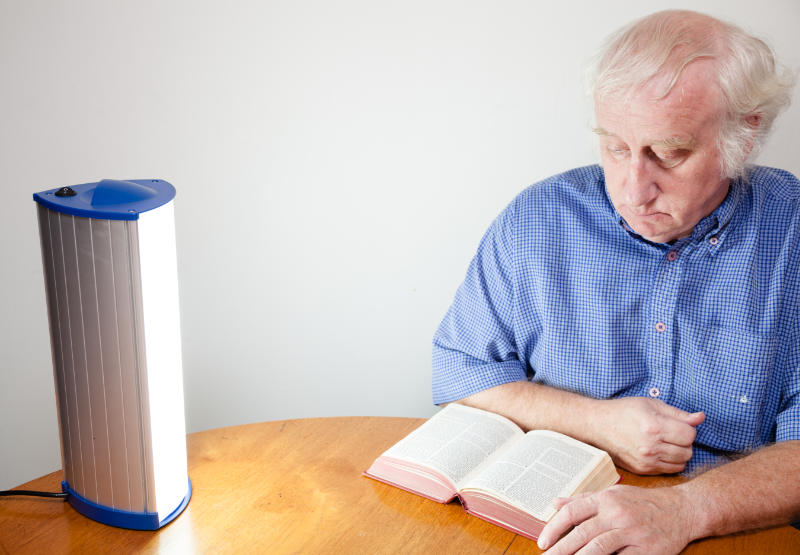
“A dawn-simulating alarm clock may also help,” Haydock adds. “This is a timed bedside light that mimics sunrise and wakes people up gradually. This can help if someone struggles to wake up in the morning during winter.”
“You could also consider using a sunrise lamp to stimulate exposure to sunlight, known as light therapy,” says Kaura. Lamps such as a Beurer TL20 SAD Lamp, simulate natural daylight to help regulate your sleep and wake hormones and are widely reported as an effective way for how to cope with seasonal affective disorder.
3. Keep to a routine and maintain social contacts
The power of behavioural habits shouldn’t be underestimated, however. Pitchiah says there are three main things they normally recommend – sticking to a good routine, diet and physical activity – and even as a SAD specialist, he stresses these things can have very positive results.
“When people with SAD get their symptoms, they tend to sleep more and can’t stick to routine. But the first thing [we say is], it’s really, really important to stick to your routine – try and stick to getting up at the same time each day and stick to your routine.”
Keeping up social contact’s is also important and a key way for how to cope with seasonal affective disorder. “If someone’s suffering with SAD, they may find it difficult to maintain contact with friends and family. Arranging regular catch-ups in advance might help to overcome this,” says Haydock. “Human contact is good for building emotional resilience and it doesn’t have to be anything too complicated – even just going for dinner one evening or a walk at the weekend can help.”
4. Food for seasonal affective disorder
Diet is important for SAD management and treating the symptoms.
Foods rich in tryptophan, an amino acid associated with serotonin production, have been found to help relieve depression. “So fish, bananas, nuts, avocados – these are some of the main examples we recommend,” says Pitchiah.

He urges people to be mindful of stodgy and sugary cravings too, which can do more harm than good, and Dr Sarah Brewer, GP and medical director for Healthspan, says don’t forget about vitamin D – the ‘sunshine vitamin’.
“Vitamin D is important for mood, and low levels during winter, when daylight hours are reduced, may contribute to SAD. While you can obtain vitamin D in your diet from foods such as oily fish, fortified margarine, eggs, butter and fortified milk, Public Health England advises everyone takes a vitamin D supplement during autumn and winter months.
5. Vitamin D supplements for seasonal affective disorder
“Their suggested dose to avoid deficiency is 10mcg, but if you have SAD, a higher dose may be needed, although this has not yet been confirmed in clinical trials,” Brewer explains. “The upper safe level for long-term use from supplements is 100mcg per day. They can be taken at any time of day, ideally with food that contains a little oil/fat, as vitamin D is fat-soluble.”
The power of vitamin D shouldn’t be underestimated as a way for how to cope with seasonal affective disorder. “In the UK, winter sunlight from October to early-March doesn’t contain enough UVB radiation for our skin to make vitamin D,” says Kaura. “During these months, we rely on getting vitamin D from food sources, such as oily fish, red meat and egg yolks.”
However, the NHS suggests everyone in the UK should take a vitamin D supplement during winter, and vitamin D deficiency is fairly widespread, which can impact on your health in a number of ways. “You should speak to your GP if you suspect you may be deficient and they can perform a simple test,” says Kaura.
The sun might be a distant memory but you don’t have to board a flight to keep your vitamin D levels ticking over – read the Wise Living guide for how to get more winter vitamin D.
“Herbal remedies like St John’s wort are also available at your local pharmacy, and are thought to improve mood and may help those with mild to moderate symptoms. However, they shouldn’t be used with a light box, as it can make your skin more sensitive to light,” warns Kaura.
6. Keeping active and exercising
Kaura explains: “If you experience SAD, lifestyle changes like regular exercise and getting as much sunlight as possible (for example trying to take at least a 20-minute walk outside every lunchtime) can make all the difference.” Other behavioural habits – like making your workspace light and airy and sitting near windows when you’re indoors – can have a positive effect on your overall mood too and is a simple tactic for how to cope with seasonal affective disorder.

“It can be very difficult for people to get out and go for walks when it’s dark in the mornings and early in the evenings, but it’s very important to keep on with the activity you usually do during summer months,” says Pitchiah, “physical activity does really help.”
And if you can exercise outdoors – even if it’s just a stroll – even better. “Exercise can help to treat conditions associated with low mood and can take the mind off things, even for a short while,” says Haydock. “Being able to exercise outside can help increase sunlight exposure, but it has plenty of other benefits, so it’s worth a try!”
“If the decrease in daylight hours affects someone’s mood, it’s important to make the most of them and get outside as much as possible,” he adds. “Whether it’s first thing in the morning or fitting it into a lunch break, wrap up warm and go for a walk.”
Read the Wise Living guide to the benefits of exercise and keeping active in autumn and winter.
7. Avoid sugary and fatty foods
When we’re feeling tired and rundown, it’s easy to reach for sugary foods like chocolate, cakes and biscuits to boost our blood sugar levels, but dietitian Helen Bond says the energy boost will be short-lived.
“It’s much better to go for healthier choices, which will give us a longer lasting source of energy, such as fruit, nuts and seeds, yogurt and oat cakes.
“Also, when we are tired and sleep-deprived, our levels of the hunger hormone ghrelin surge, which makes us crave these high sugary, fatty foods which will not give us sustained energy,” she adds. “It won’t help feed our gut microbes, too – which is a double whammy for our energy levels.”
Read the Wise Living guide to gut health and microbiomes.
8. Maintain a regular sleep routine
Feeling lethargic and sleepy during the day, or sleeping for longer than normal, are key symptoms of seasonal affective disorder, so taking steps to manage the time your spend in bed can help to keep both body and mind in a healthy routine.
Dr Irshaad Ebrahim, medical director of The London Sleep Centre, says, “Everyone is different and so is the amount of sleep they need each night. On average, a ‘normal’ amount of sleep for an adult is considered to be around seven to nine hours a night, but children and babies sleep for much longer than this.”
That said, Ebrahim believes quality of sleep is more important than the amount of sleep – and if you don’t get enough good quality sleep you’ll feel tired the next day, no matter how many hours you’ve had.
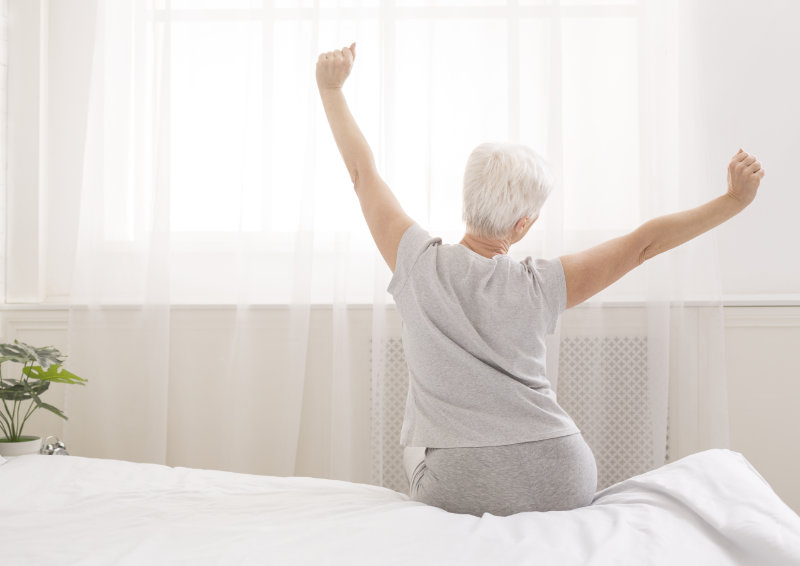
“We need the perfect conditions for optimal sleep – this includes the temperature of the room.” In the winter, we often rely on central heating to keep us warm, but Ebrahim explains that, naturally, our body temperature drops and raises whilst we sleep. So try keeping the heating off but having a few layers of bedding instead, so you can remove or add layers throughout the night.
“It’s tempting to get a few extra hours sleep at the weekend and many people look forward to a Sunday lie-in. However, changing your sleep pattern can knock your body out of routine for the coming week. It’s best to try and stick to the same bed time and wake-up time if possible,” he adds.
Having trouble sleeping? Read the Wise Living guide to how to quickly overcome insomnia.























































